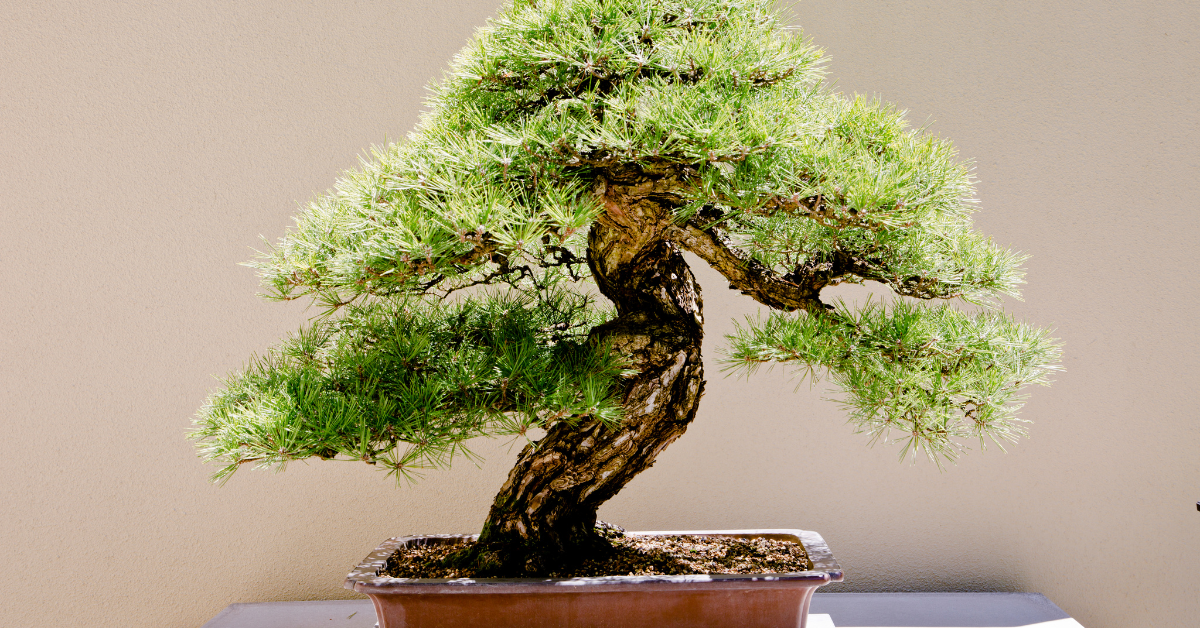Bonsai is a living art form that embodies the harmony between nature and human creativity. Originating in Japan, it has developed into a cultural symbol that represents patience, balance, and beauty in simplicity. Today, bonsai is admired worldwide, not only as a hobby but also as a bridge connecting different cultures.
What is Bonsai?
Bonsai refers to the cultivation of trees in pots over many years, shaped to recreate the essence of nature in miniature. By carefully training the branches, trunk, and roots, a single tree can express the grandeur of mountains, forests, and ancient woodlands.
Unlike ordinary houseplants, bonsai emphasizes the harmony between human technique and natural growth. Pruning, wiring, soil care, and pot selection all contribute to guiding the tree’s form, allowing it to embody the natural beauty of aged trees within a limited space.
Equally important is the Japanese aesthetic of “space” and “emptiness.” The balance between branches, open spaces, and the pot creates a unified landscape. This approach is closely related to Zen philosophy and Japanese garden design, making bonsai a window into the Japanese view of nature.
Bonsai’s Role in Japan
In Japan, bonsai holds significance as a symbol of tradition and spirituality. Its origins appear in Heian-era scroll paintings, it flourished in Zen temples during the Muromachi period, and by the Edo era it had spread among samurai and townspeople as part of interior decoration. With the Meiji era and international exhibitions, bonsai gained global recognition.
Today, bonsai is celebrated as a cultural heritage passed down through generations. Places like Omiya Bonsai Village and the Omiya Bonsai Art Museum attract both domestic and international visitors. Some families continue to nurture a single bonsai for decades, embedding stories of family and community within the tree. In this way, bonsai reflects not only artistry but also the Japanese philosophy of coexistence with nature.
Bonsai as Global Art
From the 20th century onward, bonsai spread across the world, achieving recognition as an international art form. In Europe, it is displayed in art museums and botanical gardens. In the United States, bonsai is valued for its meditative and healing qualities, offering relief from the stresses of modern life.
In recent decades, bonsai has also gained popularity in Asia. Countries such as China, Taiwan, and Thailand have adopted bonsai and developed their own unique styles. Although bonsai originated in Japan, its flexibility to adapt to diverse cultural contexts is one of its greatest strengths.
Comparison of Bonsai in Japan and Abroad
| Aspect | Japan | Overseas |
|---|---|---|
| Cultural Role | Part of traditional culture, passed down through families | Enjoyed as art or a personal hobby |
| Viewing Style | Displayed quietly in tearooms or interiors | Exhibited at shows or integrated with gardening |
| Focus of Value | Spirituality, harmony with nature | Design, relaxation, healing |
| Main Tree Species | Pines, maples, cherry blossoms | Local species used freely |
Major Bonsai Styles
Traditional bonsai styles each represent natural landscapes and reflect the Japanese way of seeing nature.
| Style | Characteristics | Symbolized Landscape |
|---|---|---|
| Chokkan (Formal Upright) | Straight, vertical trunk | Tall cedar or solitary tree |
| Moyogi (Informal Upright) | Gently curved trunk | Naturally shaped wild trees |
| Shakan (Slanting) | Slanted trunk | Trees shaped by wind or snow |
| Kengai (Cascade) | Branches and trunk hang below the pot | Trees on cliffs or rocky outcrops |
| Bunjingi (Literati) | Thin trunk, minimal branches, spacious | Calligraphic elegance, artistic restraint |
Essential Elements of Bonsai Care
As living trees, bonsai require daily attention. Proper care is vital for maintaining their beauty and longevity.
| Element | Description | Key Point |
|---|---|---|
| Pruning | Trimming branches to shape the tree | Done yearly to enhance natural form |
| Wiring | Guiding branches with wire | Shapes without harming the tree |
| Root Care | Preventing root crowding | Repotting every few years |
| Watering | Adjusted by soil and climate | Must observe dryness carefully |
| Pot Selection | Choosing pots that match the tree | Harmony between tree and pot defines balance |
Bonsai and Japanese Culture
Bonsai is closely connected to tea ceremony, flower arrangement, and Zen philosophy. In tea rooms, it enhances simplicity and seasonal atmosphere. Like Ikebana, it condenses the beauty of nature into a small form.
In Zen thought, bonsai embodies the idea that removing excess reveals the essence. This minimalist approach links bonsai to Japanese gardens, helping us understand the Japanese aesthetic of purity, balance, and silence.
| Related Art | Common Features | Role |
|---|---|---|
| Tea Ceremony | Seasonal expression, simplicity | Creates harmony in tearooms |
| Ikebana (Flower Arrangement) | Miniaturized nature | Shares the sense of “space” |
| Zen | Elimination of excess | Symbol of stillness and spirit |
Bonsai as Cultural Exchange
International bonsai exhibitions and foreign bonsai clubs foster cross-cultural connections. Japanese masters demonstrate traditional techniques, while overseas artists present bonsai infused with their own creativity. This interaction has led to new styles that respect tradition while embracing innovation.
Many foreign enthusiasts travel to Japan to apprentice under bonsai masters. They later return home to spread their knowledge, making bonsai a global medium of cultural exchange.
Conclusion
Bonsai is a living symbol of Japanese aesthetics and philosophy, embodying both the beauty of nature and the wisdom of time. In Japan, it is revered as cultural tradition, while abroad it is embraced as art and healing.
Through bonsai, people experience not only miniature landscapes but also a dialogue with time, nature, and culture. For foreigners, learning about bonsai offers a doorway into the heart of Japanese culture. At the same time, bonsai has become a bridge that unites different cultures and generates new artistic values across the globe.






